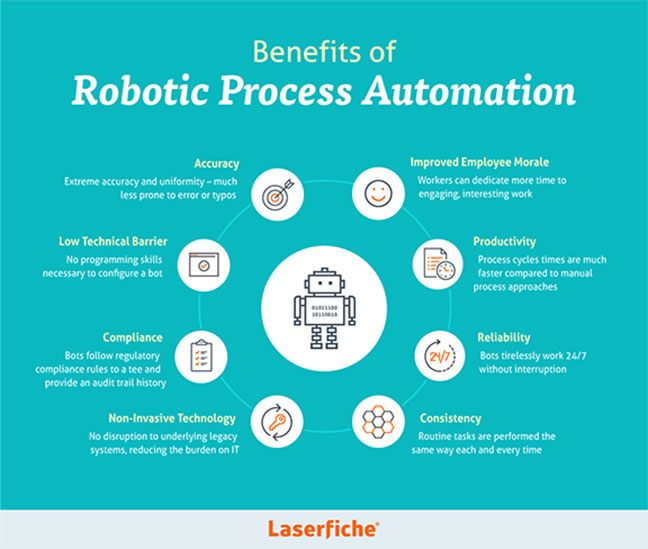
Intelligent Automation as a Business Applications Strategy
- Published
- Jan 7, 2019
- Topics
- Share
Successful organizations look for opportunities to improve their business operations. Technology can be a major driver not only in achieving operational efficiencies but also doing so in a cost effective way. Effective chief information officers maintain a high level of vigilance when it comes to new technology. Innovation is part of their duties and the business expects the IT organization to provide strategic guidance on the use of new technologies towards achieving their business objectives.
Competing in the Business World
To compete in today’s digital world, business leaders must find ways that automation can be incorporated in daily business. According to BMC.com, digital business automation is working to bridge from existing IT infrastructure to the digital-first technologies of today, while maintaining security and enabling speed and the agility that IT needs to balance diverse infrastructure, disparate data and accelerated applications. Intelligent automation involves the use of adaptive tools and technology to help IT and the business continue to grow revenue, secure competitive advantage and ensure operational excellence.
What is Robotics Process Automation?
Robotics process automation (“RPA”) refers to the use of digital technology to fully (or partially) automate a process in order to accomplish a workflow or a function. In essence, a software ‘bot’ mimics what a user can do, but at a much greater speed and accuracy.
Digital Solutions As part of a Business Applications Strategy
Companies that have implemented digital solutions have eliminated 60% to 95% of manual processing tasks. Intelligent automation involves the combination of RPA and artificial intelligence to automate processes and enhance data insights and outcomes. RPA can be beneficial for any process of your business. Its use is designed to increase productivity and accuracy, and eliminate human error and unreliability.
Processes can be streamlined in order for staff to focus on more engaging work that adds value to the business. The graphic below highlights the main benefits of RPA. Applying RPA requires an overall strategy and a plan of action and a roadmap. It also must apply to specific needs and each organization’s overall technical maturity must be examined prior to embarking on any type of digital initiative.

Artificial Intelligence
Artificial intelligence simulates human intelligence by using software algorithms to think similar to a human, but much, much faster. Examples of artificial intelligence range from spam filters or smart email categorization to smart personal assistants such as Siri, Cortana and Alexa. Advanced uses of artificial include data analytics, machine learning and cognitive systems (i.e., IBM Watson). Artificial intelligence can unlock tremendous capabilities for an organization and put it way ahead of any competitors. The world continues to change – rapidly. Are you keeping up?
PRTS Intelligence Newsletter - Q1 2019
Contact EisnerAmper
If you have any questions, we'd like to hear from you.
Receive the latest business insights, analysis, and perspectives from EisnerAmper professionals.











